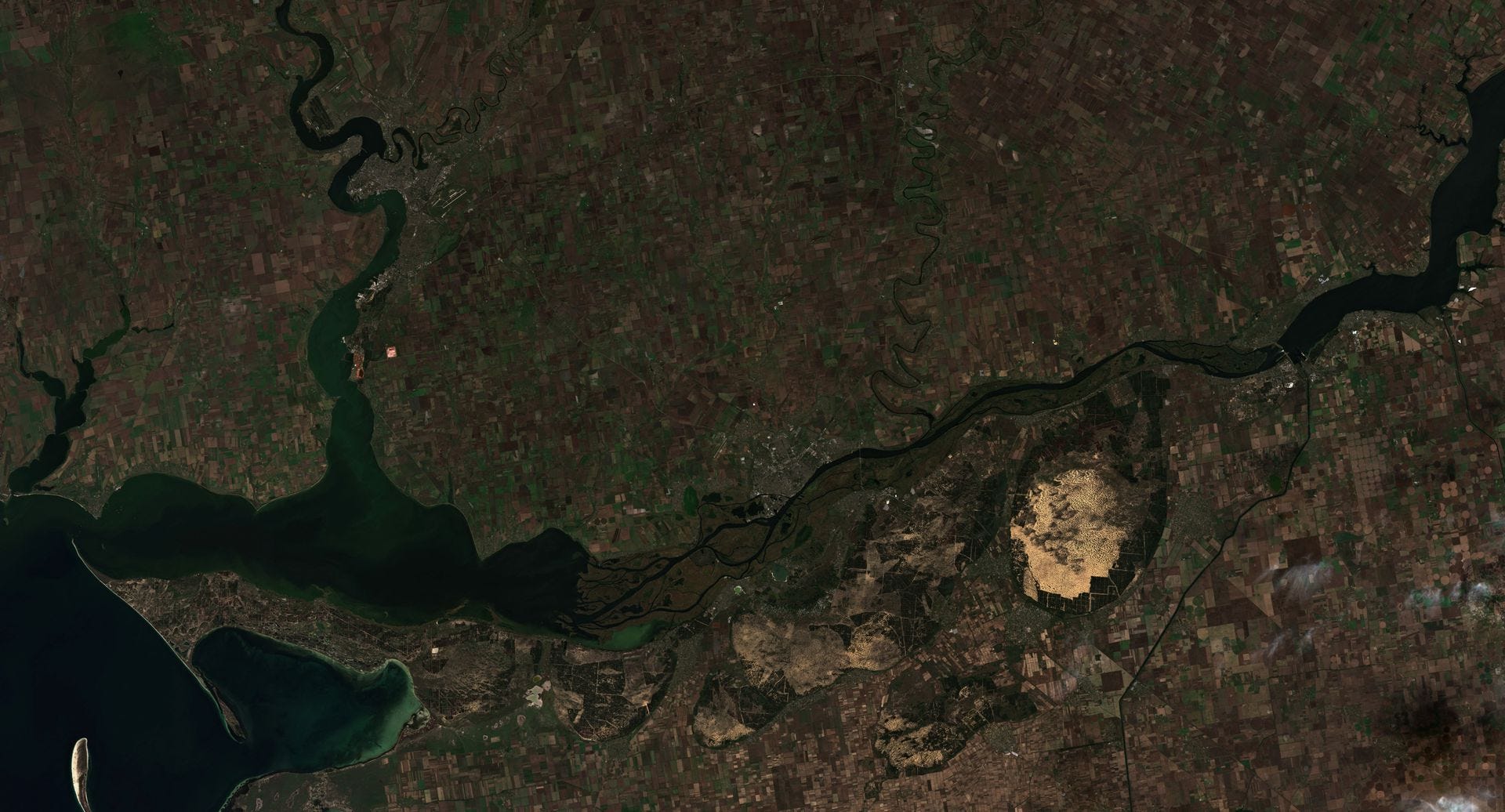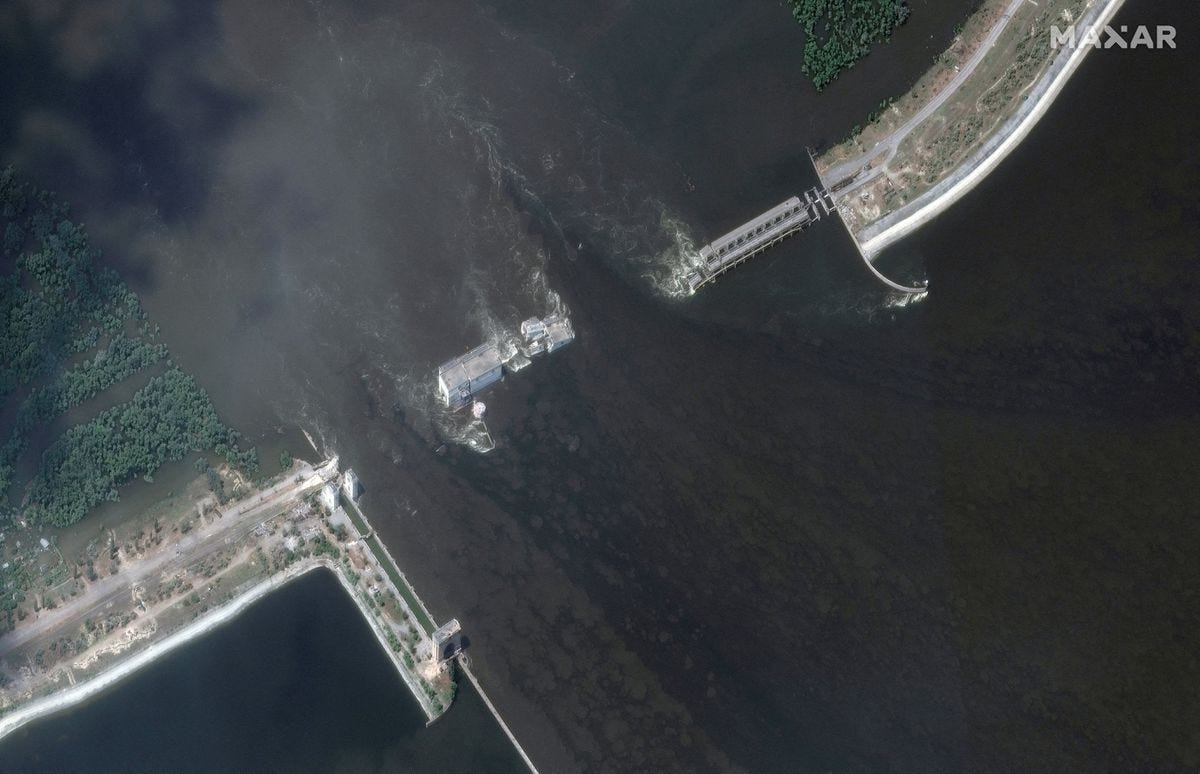
The breach in the Nova Kakhovka dam on the Dnieper River in war-ravaged Ukraine on Tuesday is no doubt a catastrophe of colossal proportions, a veritable ecological and human disaster that may outlive the war itself.
However, the striking thing about the White House reaction to the event from John Kirby, Coordinator for Strategic Communications at the National Security Council, is that he tactfully avoided endorsing Ukraine President Volodomyr Zelensky’s finger-pointing at the Russians.
Kirby said, “We’ve seen the reports that Russia was responsible… We’re doing the best we can to assess those reports. And we are working with the Ukrainians to gather more information. But we cannot say conclusively what happened at this point…”
Kirby wouldn’t be drawn into a turf that fools only enter, where angels fear to tread. And, interestingly, his remark has been on similar lines as UK Prime Minister Rishi Sunak’s also—“it’s too early to say definitively.” Sunak, who was en route to Washington on 6 June said the UK defense intelligence is to “thoroughly investigate” with the aim of establishing who was responsible for the catastrophe.
Of course, it is entirely conceivable that Britain will eventually find a way to somehow put the blame on Russia. But for the present, it has nothing concrete in hand to vilify Moscow.
Indeed, what complicates matters is that by the classical Latin canon cui bono (for whose benefit?) about identifying crime suspects, both Ukraine and Russia can be deemed as “winners” or “losers” alike. This needs explaining.
Take Ukraine first. It is a winner as Russia apparently shot itself in the foot by destroying the dam, since the topography of the place is such that it is the lower eastern side of the Dnieper in the Kherson region, which the Russians held, that are more affected by the flood. Second, the flood has washed away the mines and much of the fortifications Russians had painstakingly prepared to prevent a large-scale Ukrainian offensive. The Ukrainian forces would now get an open path when the flood abates.
Third, it is a huge propaganda stunt for Kiev to drum-beat, with able help from western media, that Russians committed a war crime. Zelensky wrote on Facebook: “Russian terrorists. The destruction of the Kakhovka hydroelectric power plant dam only confirms for the whole world that they must be expelled from every corner of Ukrainian land. Not a single meter should be left to them, because they use every meter for terror. It’s only Ukraine’s victory that will return security. And this victory will come. The terrorists will not be able to stop Ukraine with water, missiles or anything else.”
This big psychological victory also coincides with the launch of Kiev’s expected “spring offensive.” Besides, Kiev is a big-time winner if the destruction of the Kakhovka dam affects the cooling system of the reactor(s) in the Zaporozhye Nuclear Power Plant (which would make it a first-rate European crisis) and/or imperil water supply for the Crimea (which could alienate Russian public opinion.) Equally, Kakhovka dam was a hydro-electric plant, and there could be power shortage in the Russian-held areas.
But the biggest “win-win” for Kiev will be that there is nothing stopping its future amphibious assaults in the strategic Kherson region once the water levels out, since Russia has already used the trump card of engineering floods from the Kakhovka dam to wash away the Ukrainian landing forces on the eastern bank of the Dnieper.
On the other hand, when it comes to Russia, the big question that begs an answer is: Why would it want to destroy the dam when it always had the easier option to create huge floods to drown the Ukrainian deployments by simply lifting the floodgates at any point?
In a rare statement of its kind, Russian Defence Minister Sergei Shoigu offered an explanation that after having suffered very heavy losses in the first 2-3 days of the ongoing Ukrainian offensive in the Donetsk direction, Kiev has an urgent need to “redeploy the units and hardware from Kherson direction to its offensive area” in the north and resorted to the terrorist act to flood the region “to prevent Russia’s offensive actions.”

It is a logical explanation but there is a contradiction insofar as by thinning out the deployment in the Kherson front, especially the positions inside the marshy islands in the Dnieper river near Kherson where force multipliers like drone repeaters and relays were deployed, Ukrainian forces have placed themselves at a disadvantage, which the Russian side can always take advantage of once the flood subsides.
Clearly, Russia is the winner if it decides to cross the Dnieper in Kherson Oblast and liberate the historic Odessa region (and link up just beyond with the Russian troops isolated in Transnistria, Moldova), now that there is no more dam for the Ukrainian side to flood the region and impede the Russian operation!
Second, it is a net gain that the floods have submerged all the ammunition depots the Ukrainians had been building up in Kherson for an offensive in the southern region. Third, the current floods prevent any amphibious assaults by the Ukraine, which enables the Russian military to take its eyes off the Kherson front and concentrate instead on the northern front where the main thrust of the Ukrainian offensive seems to be developing.
Meanwhile, according to Russian media reports citing expert opinion:
Mass evacuation of Novaya Kakhovka town due to the destruction of the dam will not be necessary, as the bulk of the population had left the city in the fall during the regrouping of troops from the Kherson direction;
The water level is expected to drop to normal within 72 hours;
The water level in the North Crimean Canal is not affected in any way, thanks to additional reservoirs that had been built during the 2014-2022 period when Kiev had imposed a “water blockade” on Crimea;
Russian military had anticipated the present events in Kherson and had prepared layered defense fortifications behind which the troops are now positioning.
A Russian military expert, Colonel Vitaly Kiselyov said on Russian TV: “Our guys, our experts, foresaw the risk that not only Kakhovka reservoir but also the Kiev one and some others may be prone to blasts and sabotage… As regards changes to our defensive fortifications, yes, to some extent, they will have to be moved. But this is not critical. It is also not critical that the enemy may try to attack in this area.”
Incredible as it may seem, in a meticulous, insightful “post-mortem” of the Kakhovka dam breach, the well-known blogger Simplicius the Thinker offers a novel “natural theory, which is that the dam collapsed on its own.”
Here is a dam that already took so much battering from Ukrainian and Russian militaries through the past year and was in serious disrepair, with satellite photos in the days leading up to the breach already showing that it was already leaking massively at the center. Perhaps, the dam, which had seen glorious days in the Soviet era, couldn’t take it anymore. The breach actually “looks like a clean break.”
The unkindest cut of all is that Kiev, which controls several other dams upriver—such as a hydro plant in Zaporozhye city and in Dnipro city—also began playing with their water levels and filling up the Kakhovka reservoir, putting immense pressure on the 67-year-old dam. That is to say, “the dam collapsed on its own rather than direct fire or explosives sabotage, but it was still pushed into collapsing by direct action from the Kiev regime.”



